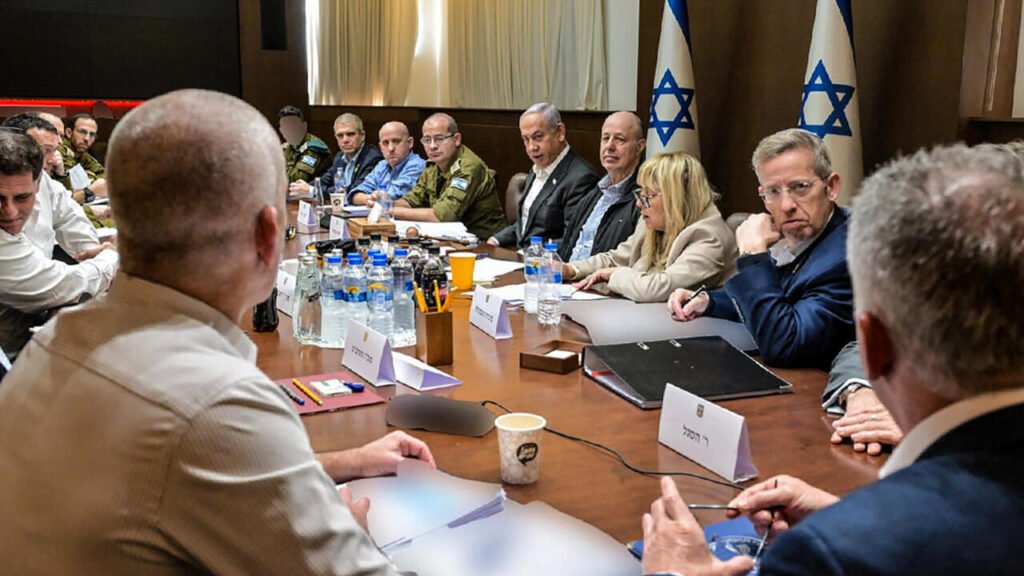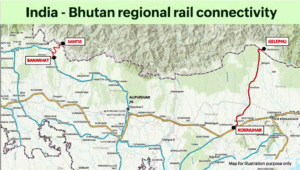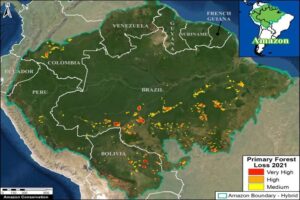
Why in News?
A ceasefire agreement between Israel and Hamas is set to take effect, including the release of hostages. This development marks a critical step toward potentially ending a prolonged conflict that has significantly impacted the Middle East. The withdrawal of Israeli troops from Rafah, a strategic area in southern Gaza, further indicates efforts to de-escalate tensions.
Introduction
The ongoing conflict between Israel and Hamas has had severe humanitarian, political, and regional consequences. The announcement of a ceasefire brings hope for a resolution to the violence that has claimed numerous lives and displaced countless individuals. This development follows extensive negotiations mediated by international stakeholders and reflects a significant move toward stabilizing the volatile situation in Gaza and surrounding regions. The conflict, which began in late 2023, has been marked by cycles of intense violence, international condemnation, and calls for peace. The upcoming ceasefire and hostage release represent a turning point in efforts to bring relief to the affected populations.
Key Highlights
Ceasefire Agreement
- The ceasefire is set to commence on Sunday, January 19, 2025, in the morning.
- It aims to halt hostilities between Israel and Hamas, bringing a pause to over a year of armed conflict.
- Mediated by international actors, including regional powers and global organizations.
Hostage Release
- The agreement includes the release of hostages held by Hamas, set to occur a few hours after the ceasefire begins.
- The release of hostages is a crucial humanitarian gesture and a key part of the agreement.
Israeli Troop Withdrawal
- Israeli forces have started withdrawing from Rafah, a critical zone in southern Gaza.
- The withdrawal signals a commitment to de-escalation and adherence to the ceasefire terms.
Conflict Duration and Impact
- The war has lasted 15 months, disrupting lives, economies, and governance across the region.
- Both sides have faced heavy casualties, and the conflict has drawn widespread international criticism.
Key Terms and Definitions
Ceasefire
A temporary suspension of hostilities agreed upon by conflicting parties. In this context, the ceasefire seeks to halt violence between Israel and Hamas while creating space for further negotiations.
Hamas
A Palestinian Sunni-Islamic militant organization and political entity governing the Gaza Strip. It has been involved in recurring conflicts with Israel over territorial and political disputes.
Rafah
A city in the southern part of the Gaza Strip, close to the border with Egypt. It is a strategically significant area often impacted during conflicts.
Hostage Release
A negotiated agreement where individuals held captive by one party are freed, often as part of broader peace or conflict resolution efforts.
International Mediation
The involvement of external actors, such as countries or international organizations, in facilitating negotiations to resolve conflicts. Key mediators in this case likely include Egypt, Qatar, and the United Nations.
Importance of the Ceasefire
Humanitarian Relief
- Provides much-needed respite to civilians caught in the conflict.
- Facilitates the delivery of humanitarian aid to affected areas in Gaza.
- Reduces casualties and alleviates the suffering of displaced populations.
Regional Stability
- A ceasefire could pave the way for broader peace talks, contributing to stability in the Middle East.
- Prevents further escalation that could involve neighboring countries and exacerbate tensions.
International Response
- The ceasefire showcases the influence of global diplomacy and underscores the role of international actors in resolving regional conflicts.
- Sets a precedent for handling similar disputes in other parts of the world.
Trust-Building Measure
- The implementation of the ceasefire and the hostage release serve as confidence-building measures.
- Could lead to more comprehensive agreements in the future.
Related Facts and Context
Timeline of the Conflict
- Began in late 2023, following escalating tensions over territorial disputes and political disagreements.
- Marked by multiple military operations, airstrikes, and rocket attacks.
Casualties and Displacement
- Thousands of lives lost on both sides, with a significant portion being civilians.
- Massive displacement within Gaza, with many seeking shelter in overcrowded facilities.
Role of International Stakeholders
- Egypt and Qatar have been instrumental in mediating peace talks.
- The United Nations and other humanitarian agencies have consistently called for ceasefires and aid delivery.
Previous Ceasefires
- Past ceasefires have often been short-lived, highlighting the challenges in achieving lasting peace.
Implications for Competitive Exams
Geopolitical Knowledge
- Understanding the Israel-Hamas conflict is crucial for questions related to international relations and Middle Eastern geopolitics.
Role of International Organizations
- Familiarity with the roles played by entities like the United Nations and regional mediators can help in questions about conflict resolution mechanisms.
Humanitarian Law and Ethics
- Insight into the ethical considerations of warfare, ceasefires, and the protection of civilians is relevant for law aspirants.
Current Affairs
- Staying updated on such critical global developments is essential for exams emphasizing recent events.
Conclusion
The impending ceasefire between Israel and Hamas and the release of hostages mark a significant milestone in addressing the ongoing humanitarian and political crisis in Gaza. While challenges remain, this agreement reflects the potential of diplomacy and international cooperation in resolving protracted conflicts. For students preparing for competitive exams, this development offers insights into conflict resolution, geopolitical dynamics, and the importance of humanitarian interventions. Understanding the nuances of such events equips aspirants with analytical skills and a broader perspective on global affairs.




